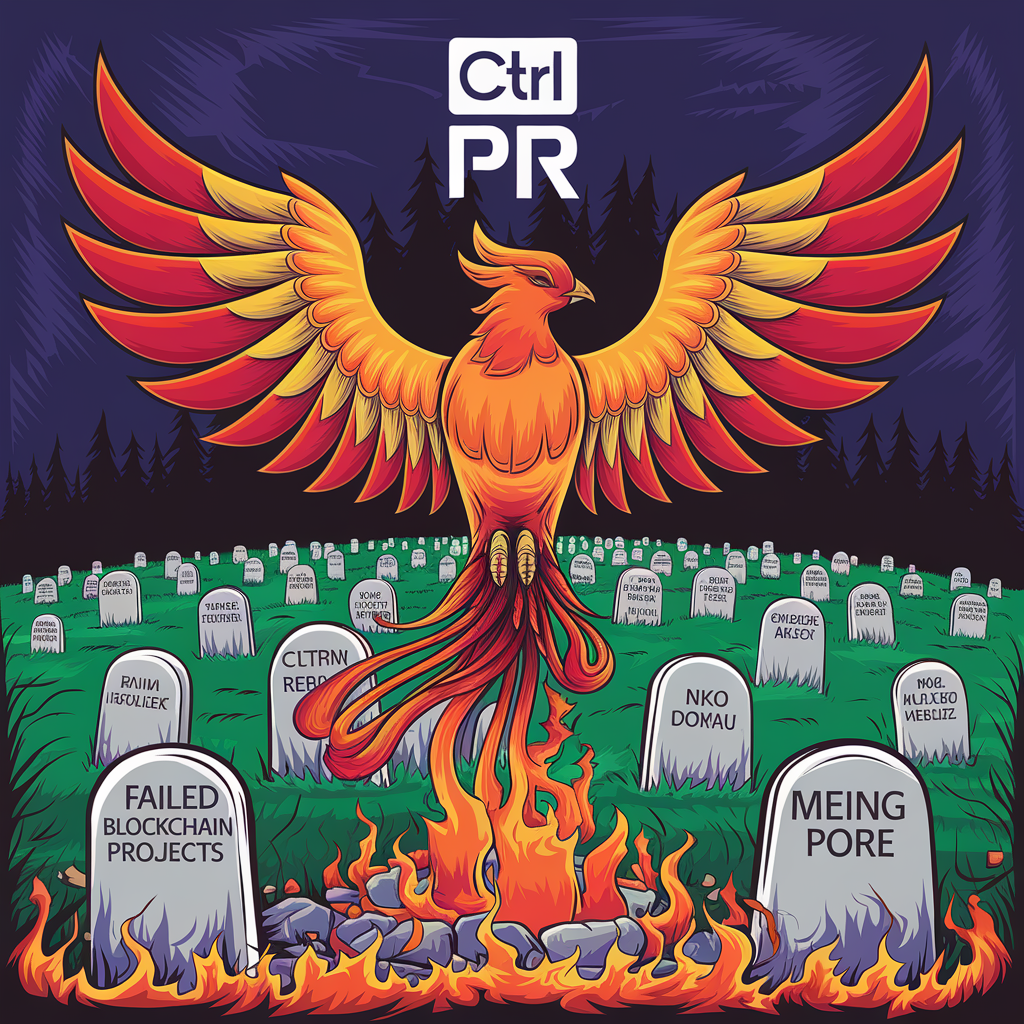Introduction: The Rise and Fall of ICOs
ICO 2017-2018 was incredible – it was actually crazy and out of control. Blockchain simply attracted everybody, and the more enthusiasts there were, the more funds many startups, developers, and entrepreneurs received in the frameworks of ICO. This became as if was heralding a new age in the world of finances. Nonetheless, not all that sparkle is real. Most others that attracted massive funding never succeeded or otherwise were victimized by regulations, troublesome markets, or technicalities. Consequently, many ICOs have been labeled as being in the “ICO Graveyard,” they must be abandoned by investors and the members of the blockchain community. But for a few of these projects, death was not the finality: Instead, for most initiates, it was a rebirth. With the right downstream spins, community support and setting the right PR wheel, these projects have came back when few people wished was possible.

Must read- The Web3 Identity Crisis: Branding Blockchain for the Masses
What Caused These ICO Projects to “Die”?
A couple of reasons could be pointed out to explain why ICOs “died” shortly after their appearance. Two reasons dominated them: overhype and under-performance; This is because many projects implemented revolutionary technologies to the projects but failed to deliver on the promises made. There were regulatory measures also affecting ICO’s progress because governments of the world were analyzing ICO’s legal positions and stopping them. Technical difficulties weakened some of the projects even more.” Blockchain is very profound technology and many teams fail to understand the amount of work that can be needed for constructing the large scale solutions. Finally, market non-adopters failed to develop some promising technologies by employing inadequate marketing plans and market entry techniques.
The Resurrection: 6 Projects That Bounced Back
1. Tezos
Tezos’ ICO remains among the biggest by attracting more than $230m. But it soon sunk into internal feuds,,the legal cases and governance problems. The investors bailed out, and the project was staring at the end of its tunnel. What brought Tezos back was the way it was able to handle such issues as well as shift to decentralized governance. They made a decision to use the new self-amending blockchain technique, by means of which the network was able to alter itself without having to undergo a hard fork. It made Tezos to bounce back through concentration on discharge innovation and refocusing on their initial vision of forming a benevolent community by launching its mainnet and regaining community trust.
2. EOS
While EOS managed to attract a total of $4 Billion through its ICO, it soon turned into a poster child for blockchain’s worst problem of overhyped promises. The platform said it wanted to provide a scale that would be unmatched but those ambitions were soon contested. It was accused of being centralized and lacking technical innovation that the developers always expected. However, EOS team did not leave. They insisted on refining the core technology and pay attention to the developer and open-source expansion. Through associations with such projects as the EOS Network Foundation and shifting its focus toward scaling, EOS was able to recover some of the lost ground.
Must read- Web3 Marketing: Connecting Brands with the Decentralized Web
3. Bancor
Bancor made people meet automated liquidity pools – a very primary type of what the decentralized finance movement would later bring to the world. However, it fell into acutely illiquidity issues and was nearly wiped out after a number of hacks and market collapses. Instead of going out of business, Bancor used this chance to change its strategy. It overhauled its liquidity model, intertwined with key DeFi environments, and implemented a liquidity shield enabling the platform to recover its lost ground in the rapidly expanding DeFi market.

4. Polkadot
Polkadot had a good idea from the start, which was the ability to connect many different blockchains together. However, technical set backs and doubts over the practicality of cross-chain technology cast doubts over its future. Despite these challenges, the project continued and concentrated on the successful deployment of its “parachain” technology that finally brought cross-chain interaction. By strengthening its community and ensuring that a string of long-promised deliveries are met, Polkadot proved that it can fulfill what has been set in motion.
5. ICON
ICON planned on creating one of the biggest decentralized networks of connected ICONOMIs, but this initiative collapsed due to inactivity and a weak community presence. People lost confidence, and it looked like any other dead end ICO. However, ICON took time to rebrand and refocus before venturing into roject management as both a construction consultant and a constructor. Entering new partnerships and the launch of important technological network changes were brought to a successful result. Present day, ICON is still operating in the market as an organization that has a primary goal of establishing a single blockchain network that will interconnect blockchains.
6. Status
Status was an ICO darling is raised $100 million to develop an Ethereum-based mobile app for web, messaging, or two-way engagement with dApps. But it lacked UX and was too obsessed with developing new technology instead of users’ adoption. Status came back by redesigning its brand, enhancing the application interface and bringing the company back to its focus – the decentralization of communications. Through focusing closely with the need of the people, Status has been able to regain some of lost ground and is still a serious contender in the dApp market.
Key Ingredients for Resurrecting a Blockchain Project
The fact is the comeback stories of these six projects have a lot in common. Transparency rules the world, when people see managers admitting their mistakes and showing the way forward confidence is restored. Another aspect is community engagement – informing the core user base and investors can change their minds from skeptical to support. This section demonstrates that the shifts in technology are necessary and vital in progressing in the blockchain sector, whether Tezos’ governance model or Bancor’s preservation of liquidity. They also provide a form of support by introducing new ideas and tangible resources into a problematic project.
Public relation management has a significant responsibility when it comes to reviving most blockchain projects. The PR strategy can always ensure that the narrative is changed from a failure to a platform for doing something better. With CTRL PR, we focus on helping blockchain initiatives regain credibility and consumers’ attention by rebranding and repositioning them. Through orienting projects to become more transparent, using simple language, and engaging with the media strategically different projects have been rebuilt with us.
Conclusion: The ICO Graveyard Isn’t Always Final
Unlike most ICO projects that were dumped in the graveyard, the six listed projects are living examples that a comeback is achievable. Community lockout and public relations mismanagement may render a project as ‘dead’ but with the right calls for technological adoption, community involvement, or PR messaging a project can easily be revived. For a blockchain project that is also suffering from one adversity of the other, CTRL PR brings the experience and the strategic advice to enable the project to recover.



